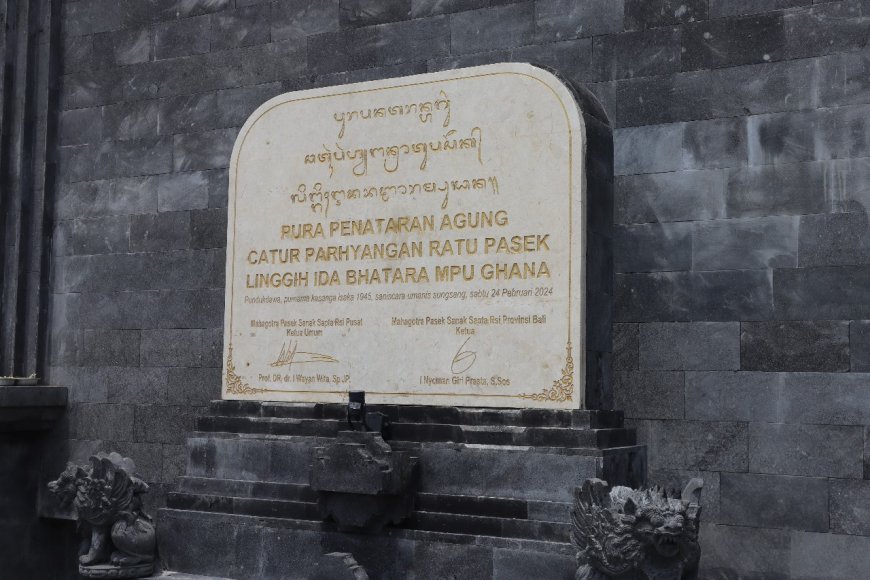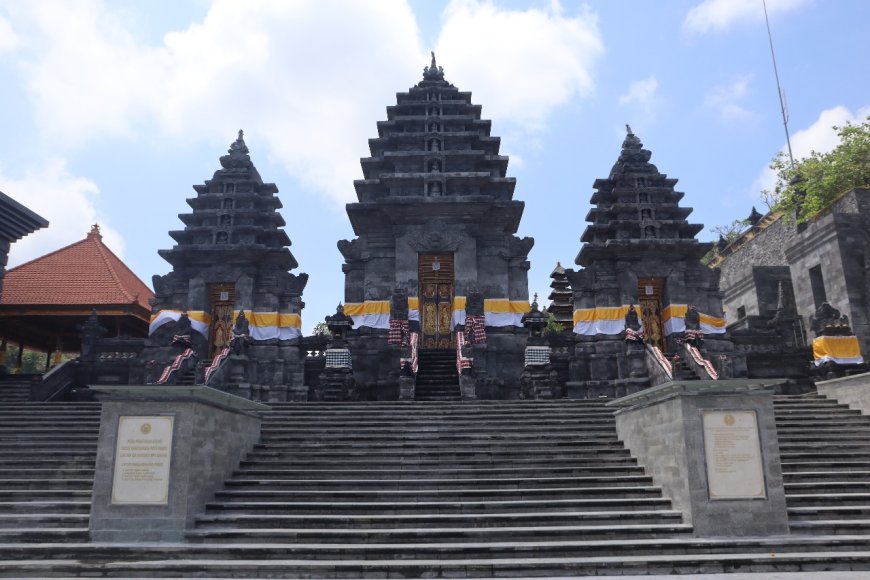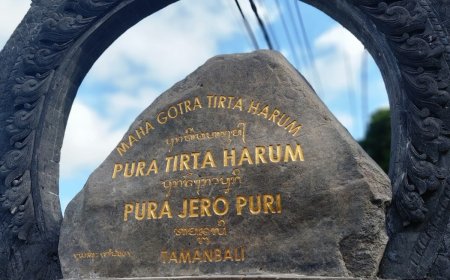Punduk Dawa Temple: A Unique Combination of Modern and Traditional Balinese Architecture in Klungkung
Penataran Agung Catur Parahyangan Ratu Pasek Punduk Dawa Linggih Ida Betara Mpu Gana Temple or better known as Punduk Dawa Temple is a temple located in Punduk Dawa Hamlet, Pesinggahan Village, Dawan District, Klungkung, Bali. Pura Punduk Dawa is the perfect embodiment of modern architecture and traditional Balinese art, creating a beautiful and spiritually meaningful sanctuary. The traditional Balinese carvings that adorn the corners of the temple reinforce the sacred feel and taksu of this temple.
Pura Punduk Dawa has a rather complex history. Its establishment is closely linked to a conflict that arose at Pura Dasar Bhuana, Gelgel, Klungkung. The issue began when a sulinggih (Balinese priest) from the Pasek community was not permitted to perform rituals at the Bale Gajah pavilion of the temple, which led to dissatisfaction among the Pasek community. In response, the Maha Gotra Pasek Sanak Sapta Rsi (MGPSSR) organization decided to relocate Ida Bhatara Mpu Gana from Pura Dasar Bhuwana to Pura Catur Lawa Ratu Pasek Besakih, and eventually, to Pura Ratu Pasek Punduk Dawa. Despite this decision, the matter remains a subject of controversy to this day.
Regardless of the ongoing controversy, the construction of Pura Punduk Dawa officially commenced on December 13, 2016, and continues to this day. The temple is situated in Dusun Punduk Dawa, Pesinggahan Village, Dawan District, Klungkung, Bali.
The construction of Pura Punduk Dawa focuses on several aspects, such as comfort, aesthetics, and most importantly, preserving the temple's taksu (spiritual aura). Currently, the construction is nearly complete, with many facilities already in place, such as elevators, resting areas, and restrooms. Key areas like the Penataran, Bale Gong, Wantilan, and the prayer area have been meticulously arranged, providing a clean and comfortable atmosphere for devotees.
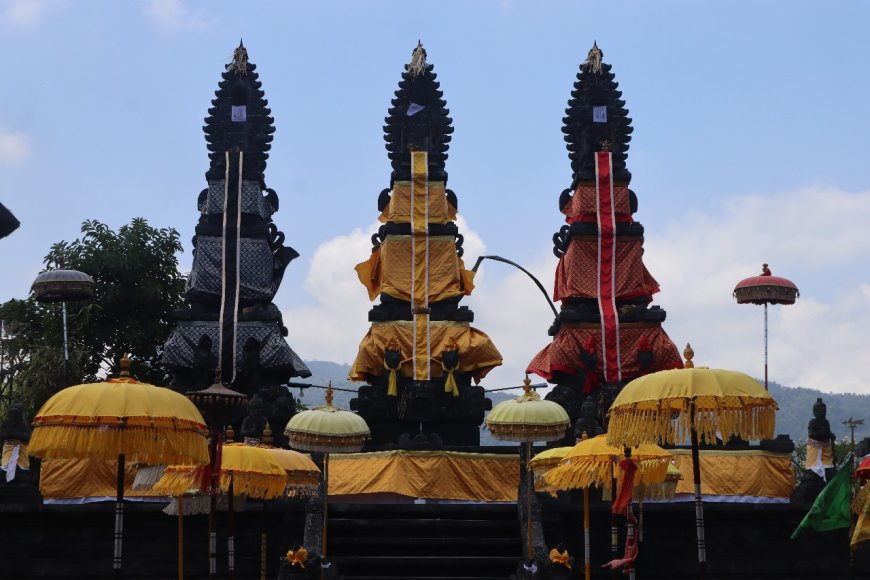
Penataran Area (Photo Source: Author's Collection)
One of the key attractions of Pura Punduk Dawa lies in its harmonious fusion of modern architecture with the beautiful preservation of traditional Balinese art. Every corner of this temple has been designed with precision, showcasing artistic details that leave visitors in awe.
The use of gray basalt stone in most of the building’s structures creates a sense of strength and stability, essential for a sacred site. Despite its robustness, the basalt stone exudes a natural and elegant feel, achieving an impressive balance between physical strength and aesthetic beauty.
Meanwhile, batu padas (padas stone) arranged in abstract yet aesthetically pleasing patterns adorn various sections of the temple, adding a dynamic visual dimension. The textured surface of the batu padas creates a strong yet non-monotonous impression, making Pura Punduk Dawa a perfect blend of modernity and tradition.
In addition, traditional Balinese carvings, intricately crafted, embellish every corner of the main structures, including the Pelinggih, Wantilan, Bale Gong, and other decorative elements. These carvings are not merely ornamental but are rich with deep spiritual and philosophical values from Balinese Hinduism. While modern architecture has been seamlessly integrated, traditional Balinese art remains the heart and soul, honored with great reverence.
The harmonious combination of modern architecture and traditional Balinese art makes Pura Punduk Dawa not only a sacred place but also a cultural icon that has garnered significant attention. Its beauty has the power to stir emotions, while its architectural uniqueness firmly establishes Pura Punduk Dawa as a cultural heritage that continues to thrive amid the tides of modernization.
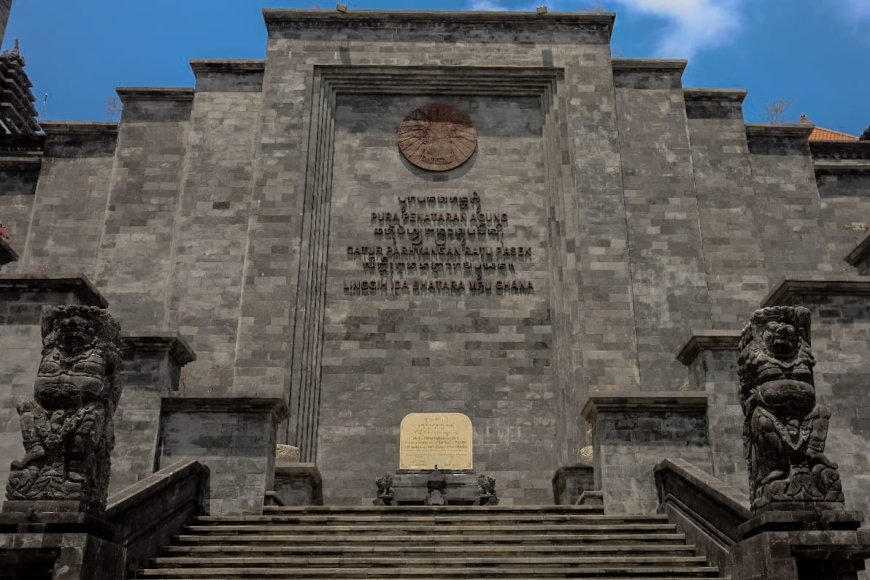
Entrance of Pura Punduk Dawa (Photo Source: Author's Collection)
The large number of Pasek community members who worship at Pura Punduk Dawa has influenced the temple’s design to prioritize comfort for all devotees. One of the unique facilities, rarely found in other temples, is an elevator with a capacity of up to 20 people, providing easy access to the main prayer area at the upper level of the temple. This elevator was designed with special attention to the elderly, people with disabilities, and priests, but it is also accessible to all worshippers. The inclusion of this facility not only offers extraordinary convenience, especially considering the temple’s elevation, which may be a challenge for those with physical limitations, but it also symbolizes a commitment to inclusivity for all devotees seeking a comfortable worship experience.
Additionally, the cleanliness of the restrooms at Pura Punduk Dawa is worth noting. Despite often being crowded, the restrooms remain well-maintained. Several restrooms are strategically located throughout the temple grounds, ensuring easy access for devotees without requiring them to walk long distances. These facilities reflect how Pura Punduk Dawa not only emphasizes spiritual aspects but also ensures the comfort of worshippers, making it a modern and welcoming sacred place for all.
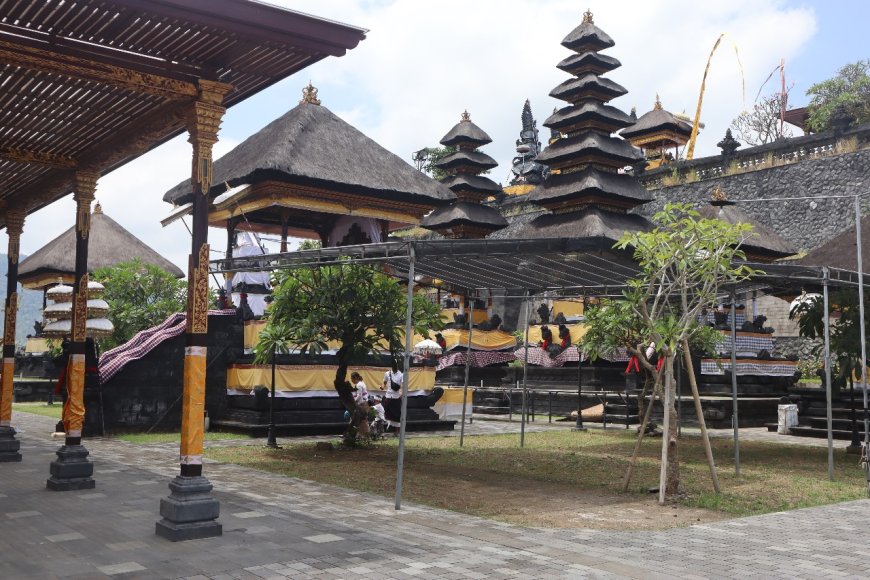
Utama Mandala Area (Photo Source: Author's Collection)
Pura Punduk Dawa is not only a sacred place but also a cultural icon that blends modern architecture with traditional Balinese art. Apart from the reason for the construction of this temple which is still a controversy, this temple is very unique because it is equipped with modern facilities such as elevators and functional spaces that can be used for cultural activities and rest, making it a comfortable place of worship for all groups. This temple also embodies the solidarity of Hindus, especially Semeton Pasek throughout Bali. By maintaining spiritual taksu and integrating aesthetic beauty, Pura Punduk Dawa is not only an important spiritual symbol for the people, but also a cultural heritage that is sustainable in the midst of the times.


















































